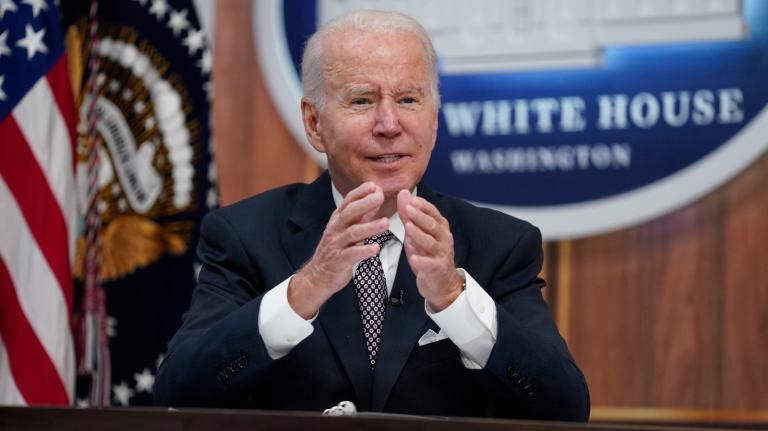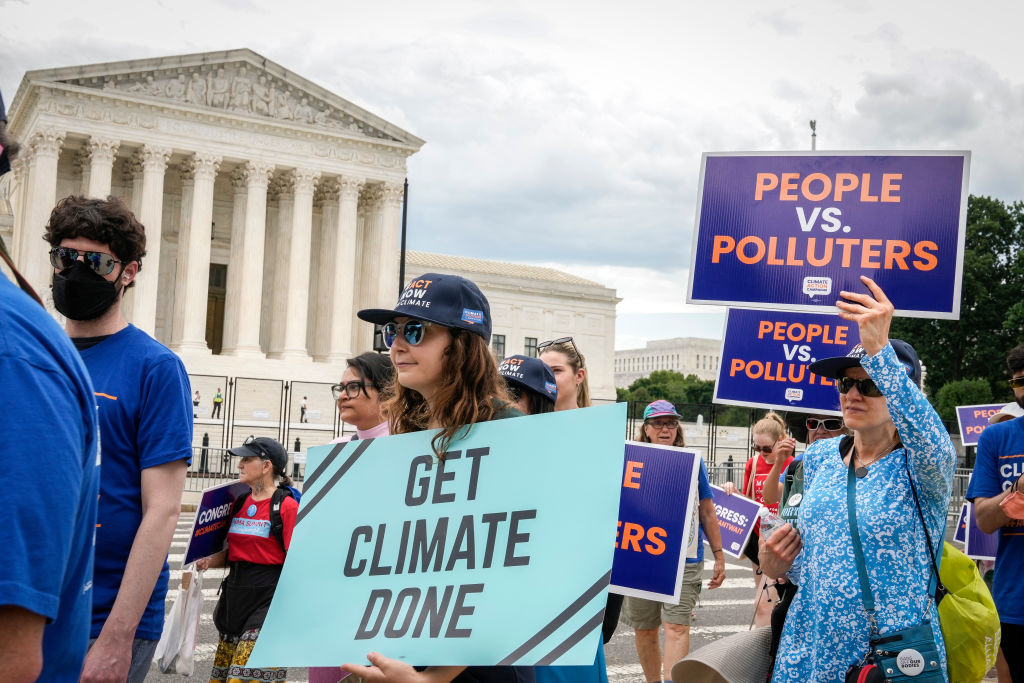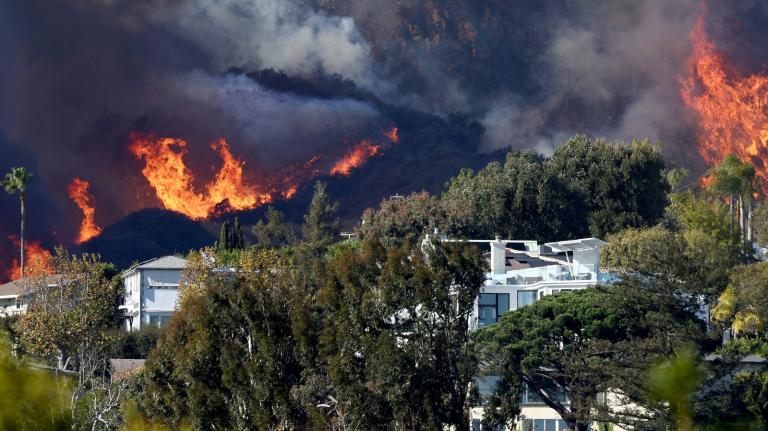Late last month, the U.S. Supreme Court issued its long-awaited ruling on West Virginia v. EPA, a case in which the government’s ability to regulate carbon emissions from power plants was in dispute. Environmentalists expected the court’s conservative majority to deal a deadly blow to the Environmental Protection Agency’s authority to regulate climate pollution from the power sector, which accounts for roughly a quarter of all U.S. greenhouse gas emissions.
Instead, the Supreme Court issued a narrow but consequential opinion that only ruled out one specific mechanism for slashing carbon emissions: so-called generation shifting. The mechanism was one aspect of the Clean Power Plan, first proposed by the Obama administration in 2015, which set maximum carbon emission rates for coal and natural gas plants and allowed utility companies to comply using a variety of methods. They could improve efficiency at individual plants, or they could opt for generation shifting — changing their overall mix of electricity generation to use less coal and a greater share of natural gas (which is less carbon-intensive than coal) and renewable sources. The rule quickly got tied up in litigation and never took effect, but the falling prices of natural gas and renewables changed the country’s energy mix anyway and the U.S. met the Clean Power Plan’s target a decade ahead of schedule.
The Supreme Court’s six-member majority ruled that the EPA’s proposed use of generation shifting overstepped the authority it was given by Congress when it passed the Clean Air Act, which was the legal basis for the Clean Power Plan. However, though this ruling invalidated the already-defunct Clean Power Plan, it didn’t eliminate any carbon-cutting approaches besides generation shifting. Unlike the court’s sweeping ruling overturning the 50-year precedent of Roe v. Wade, the West Virginia opinion respected precedents declaring carbon dioxide a threat to public health that the EPA can regulate.
As a result, the Biden administration’s EPA still has room to develop a new carbon rule for the electricity sector. In an interview with the New York Times last week, President Biden’s nominee to head the EPA’s air quality division, Joseph Goffman, said that the agency has been “putting together a menu of three or four different approaches” that would fit within the limitations outlined by the Supreme Court. While he didn’t disclose the exact approaches that the EPA is considering, Goffman said that the ruling didn’t “take anything off the menu that we’ve been focusing on.” The agency has said that it expects to issue a new proposal early next year.
Grist spoke to legal scholars who have been following the case to understand how the EPA might recalibrate its approach given the recent ruling. Three approaches emerged as potential pathways for regulation. Understanding the options requires a quick overview of the broad tools that the executive branch uses to regulate U.S. air pollution. The most famous of these tools is the Clean Air Act, which was enacted in the 1960s and amended in the 1970s. Each section of the Act addresses a different type of pollutant or source of air emissions. The most relevant sections for regulating carbon pollution from the power sector are sections 111 and 115, which give the EPA the authority to regulate air pollutants from stationary sources and air pollutants of international concern, respectively. Section 111 also requires the EPA to establish a “best system of emission reductions” and give states an emissions guideline that they can use to require reductions at individual facilities.
Another option is the National Ambient Air Quality Standard, a 1970 Clean Air Act amendment known by the acronym NAAQS, a powerful tool that allows the EPA to establish nationwide caps for the ambient air concentrations of “criteria air pollutants” that “may reasonably be anticipated to endanger public health or welfare.” The EPA is required to identify such pollutants and set “the maximum airborne concentration of [the] pollutant that the public health can tolerate,” and it has used this provision to regulate sulfur dioxide, nitrogen oxides, and other pollutants.
The approach around which most expert opinions are coalescing involves continuing to use section 111, the same provision of the law under which the Clean Power Plan was developed. In the West Virginia ruling, the Supreme Court implicitly accepted the constitutionality of using section 111 to regulate carbon emissions. Although it struck down the Clean Power Plan’s particular interpretation of section 111, it did not eliminate the overall ability of the EPA to use the section to regulate power plant emissions.
“We have clear direction from this ruling that the EPA can regulate greenhouse gases from power plants under section 111,” said Jay Duffy, an attorney with the nonprofit Clean Air Task Force. Duffy, who argued a portion of the West Virginia v. EPA case when it was heard by an appeals court last year, said that he would rather use a section of the law that the Supreme Court has approved than rely on a section of the law that hasn’t been tested before.
“We have enough answers and green lights to regulate CO2 from power plants under this section,” he said.
Duffy and other experts cautioned that the ruling didn’t explicitly state that a future rule based on section 111 would be viewed favorably by the court. Rather, these conclusions are based on a close reading of the ruling, hints embedded in the way it discusses past regulations, and details in the footnotes that reveal which approaches the majority views as going too far.
For instance, in discussing a previous regulation that relied on section 111, the ruling notes approvingly that the Mercury and Air Toxics Standard “was one more entry in an unbroken list of prior section 111 rules that devised the enforceable emissions limit by determining the best control mechanisms available for the source.” In other words, the EPA’s approach with the mercury rule, which involved identifying technologies that power plants could use to meet a specific cap on emissions, was acceptable — but the Clean Power Plan, which offered a more sweeping tool in generation shifting, was not.
“A more traditional type of regulatory approach that EPA has used for decades seems to sit better with this court, [rather] than something a little more creative, even if that more creative approach would have saved a lot of money,” said Lissa Lynch, an attorney with the Natural Resources Defense Council, referring to the fact that generation shifting has generally been the cheapest way for utilities to reduce their overall emissions. By taking generation shifting off the table, the Supreme Court is pushing the EPA toward more expensive options, she said.
Some of the footnotes also provide important clues about which approaches may receive a seal of approval from Justice John Roberts, the court’s chief justice. In one sharply-worded footnote responding to Justice Elena Kagan’s dissent, which pointed out that the EPA’s regulations have always had an effect on the mix of energy sources in the country, Justice Roberts distinguished between regulations that happen to cause changes in the energy mix and those that force a wholesale shift.

“There is an obvious difference between (1) issuing a rule that may end up causing an incidental loss of coal’s market share, and (2) simply announcing what the market share of coal, natural gas, wind, and solar must be, and then requiring plants to reduce operations or subsidize their competitors to get there,” Roberts wrote. The ruling implies the former is acceptable and the latter — Roberts’ summary of the Clean Power Plan — is not.
In another footnote, Roberts states that a new rule simply requiring coal plants to convert to natural gas would not be acceptable. “EPA has never ordered anything remotely like that, and we doubt it could,” he wrote.
The footnote indicated that “if you’re requiring a coal plant operator to convert that facility to run fully on gas, that would be too far,” for Justice Roberts, said Lynch. “But that does seem to leave open the possibility of a standard that’s based on either cofiring or a cleaner fuel using part of a facility so that it’s not changing the nature of the plant itself, but is causing it to operate more cleanly.” (In this case, cofiring refers to blending coal with a secondary, less carbon-intensive fuel like natural gas to reduce emissions when burnt.)
Lynch and others said that the agency’s next step is to conduct a technical analysis that identifies specific emissions reductions technologies, assess their potential for reducing carbon emissions, calculate the costs of implementing them, and study how their implementation may cause changes to the nation’s energy mix. Carbon capture and storage, cofiring, and efficiency upgrades at facilities are likely to be studied by the agency, experts said. Ultimately, the EPA has to propose a legally defensible rule that doesn’t look like it’s trying to cause every coal plant in the nation to shut down — a result that the court’s conservative majority would likely reject — but that is also not so weak that it doesn’t put a dent in overall emissions.
Some groups have seen a potential pathway for the EPA to regulate carbon emissions in NAAQS, a powerful tool that has been used so far to regulate sulfur dioxide, lead, and other pollutants. In 2009, well before the Clean Power Plan was proposed, the Center for Biological Diversity and 350.org, two environmental groups, petitioned the EPA to utilize its authority under NAAQS to declare carbon dioxide a “criteria air pollutant” like sulfur dioxide and nitrogen oxides and set a nationwide cap for carbon emissions.
In the wake of last month’s ruling, the two groups have championed the idea once again, noting in a press release that “a standard for greenhouse gas pollution would have a huge impact because it would apply across all sectors of the economy, not just fossil fuel power plants.” Though the Trump administration denied the petition, Biden’s EPA withdrew the denial last year and stated that it “intends to further consider the important issues raised by your petition before responding.”
However, legal experts Grist spoke to raised a number of concerns with this approach. For one, it would be challenging to set a “safe” level for carbon dioxide concentrations in the air and assess the level of emissions from various sources that would be acceptable in order to meet that standard. The reason is that a molecule of carbon dioxide has the same effect no matter where it is released in the world. As a result, every region in the country may find itself in noncompliance with the standard and reliant on emissions reductions elsewhere in the world. “It’s a legally risky proposition” and opens up a “real can of worms,” according to Duffy.
Another pathway for the EPA rests in section 115 of the Clean Air Act. The provision requires that the EPA regulate international air pollutants if it receives reports or studies from an international agency that indicate that pollutants emitted in the U.S. could “reasonably be anticipated to endanger public health or welfare in a foreign country.”
Although this pathway had some support from advocates in previous years, experts Grist spoke to said this approach may be viewed unfavorably by the majority on the Supreme Court given its views on the so-called “major questions” doctrine. The newly popular legal theory among conservative judges requires that agencies have explicit direction from Congress when issuing rules of vast political and economic significance. The Supreme Court explicitly invoked the doctrine for the first time in West Virginia v. EPA.
Using section 115 as the basis for carbon regulation may run into issues with the major questions doctrine, experts said. Section 115 has never been used to finalize a rule before, and given that carbon regulation has the potential to create economy-wide changes, the Supreme Court may strike down a rule that relies on it.
“Nobody really knows what that doctrine is yet,” said Carrie Jenks, executive director of the Environmental & Energy Law Program at Harvard University. “It’s obvious that EPA can’t do something big, but what that is and how the court and stakeholders view it will have to be determined once we get a [Section 111] rule proposed.”



